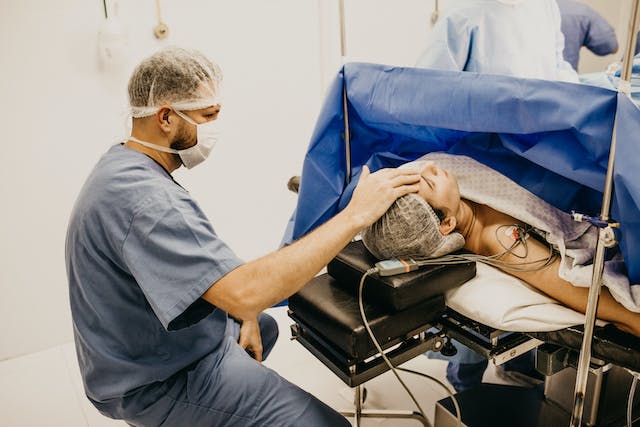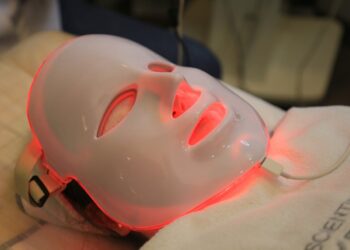Facelift surgery, medically known as rhytidectomy, is a popular cosmetic procedure aimed at creating a more youthful facial appearance. This surgery involves the removal of excess facial skin, with or without the tightening of underlying tissues, and is often combined with other procedures like eyelid surgery or a brow lift.
While the results can be transformative, leading to enhanced self-confidence and a rejuvenated appearance, the journey to these results includes a critical post-operative phase.
Importance of post-operative care in reducing bruising and swelling
The importance of post-operative care cannot be overstated, especially when it comes to managing common side effects such as bruising and swelling. These symptoms are a natural part of the healing process, but their severity and duration can be significantly influenced by how the recovery period is managed.
Effective post-operative care not only ensures a more comfortable recovery but also plays a crucial role in achieving the best possible outcomes from the facelift procedure. Understanding and adhering to recommended care practices can greatly reduce the risk of complications, minimize discomfort, and expedite the journey to seeing the full, beautiful results of the surgery.
Understanding Bruising and Swelling Post-Facelift
After a facelift, it’s common for patients to experience bruising and swelling, two of the most immediate and noticeable effects following the procedure. Understanding these symptoms is key to managing them effectively.
Why Bruising and Swelling Occur:
- Bruising: This occurs due to the manipulation of soft tissues during the surgery. As the skin is repositioned and excess tissue removed, blood vessels may be disrupted, leading to bruising. The extent of bruising varies depending on the individual’s skin type, the extent of the surgery, and the techniques used by the surgeon.
- Swelling: Swelling is the body’s natural response to surgery and healing. It happens as a result of increased fluid in the tissue caused by the surgical trauma. The body sends more blood to the area to aid in healing, which results in swelling.
Typical Duration and Progression:
The intensity of bruising and swelling typically peaks around the second or third-day post-surgery.
Bruising usually starts to diminish after the first week and can take two to three weeks to resolve completely. The color of bruises may change from red or purple to yellow or green as they heal.
Swelling tends to be more persistent. While a significant reduction in swelling is often seen within the first few weeks, some degree of swelling may continue for several months. It’s important to note that the final results of a facelift may not be fully visible until all swelling has subsided, which can take several months.
Understanding these timelines and the natural progression of these symptoms can help patients set realistic expectations for their recovery and the unveiling of their facelift results.
Immediate Post-Operative Care
Use of Cold Compresses and Elevation to Reduce Swelling:
- Cold Compresses: Applying cold compresses to the face is a key step in the immediate post-operative period. This helps in reducing swelling and providing relief from discomfort. It’s important to use the compresses as directed, usually for short intervals, to avoid any skin damage or irritation.
- Elevation: Keeping the head elevated above the heart level, especially during the first few days post-surgery, is crucial. This can be achieved by propping up with pillows while sleeping or resting. Elevation helps in minimizing swelling by reducing blood flow to the facial area.
Importance of Following Surgeon’s Instructions on Wound Care and Medication:
- Wound Care: Proper care of the surgical site is vital for healing and preventing infection. This includes gentle cleaning, applying any prescribed ointments, and changing bandages as instructed. It’s essential to handle the area with care to avoid disrupting the healing process.
- Medication: Adhering to the prescribed medication regimen is important for managing pain and preventing infection. This may include antibiotics, pain relievers, and sometimes medications to reduce swelling. It’s important to follow the dosage and schedule as prescribed by the surgeon.
Overall, immediate post-operative care is a critical phase where following the surgeon’s detailed instructions can significantly impact the healing process and the final outcome of the facelift.
Diet and Nutrition for Healing
Role of a Healthy Diet in Recovery:
- Balanced Nutrition: A nicely balanced weight loss program plays a pivotal role in the healing manner of facelifts. Nutrients are critical for tissue restoration, reducing inflammation, and strengthening the immune machine. An eating regimen rich in vitamins, minerals, proteins, and antioxidants helps faster and extra effective restoration.
- Hydration: Adequate hydration is critical. Water allows for flushing out pollutants, lowering swelling, and keeping the skin hydrated. Patients are cautioned to drink lots of water and keep away from dehydrating drinks like alcohol and caffeine.
Foods and Supplements that Can Aid in Reducing Bruising and Swelling:
- Anti-inflammatory Foods: Incorporating foods with anti-inflammatory properties can be beneficial. This includes items like berries, nuts, green leafy vegetables, and fatty fish. These foods can help in reducing swelling and promote faster recovery.
- Vitamin-rich Foods: Vitamins which include Vitamin C, discovered in citrus culmination and leafy veggies, and Vitamin K, determined in inexperienced veggies, are acknowledged for his or her position in restoration and reducing bruising.
- Protein-rich Foods: Protein is crucial for wound healing and tissue restoration. Lean meats, fish, eggs, and legumes are excellent sources of protein.
- Supplements: Certain supplements like bromelain (observed in pineapples) and arnica may be recommended by a few surgeons to assist in lessening bruising and swelling. However, it’s crucial to consult with the doctor earlier than taking any supplements to make sure they don’t interfere with different medicines or the restoration manner.
In summary, a nutritious diet and possibly some supplements, under the guidance of the surgeon or a nutritionist, can significantly contribute to a smoother and quicker recovery after a facelift.
Physical Activity and Rest
After a facelift, it’s essential to balance physical activity and rest. Initially, patients should limit their physical exertion, avoiding strenuous activities and heavy lifting to prevent strain on the surgical sites and minimize swelling. Gradually, light activities can be resumed, as they are crucial for circulation and overall health. Walking and gentle movements are encouraged, but always within comfort limits and following the surgeon’s advice.
Equally important is ensuring adequate rest. Sufficient sleep and resting in a comfortable, reclined position are vital for effective healing. Sleeping with the head elevated, and using extra pillows to maintain a semi-upright position, can significantly reduce swelling and discomfort.
Long-Term Care and Maintenance
Long-term care and maintenance are pivotal in the post-facelift journey. Adopting a gentle skincare routine, including the use of mild cleansers and moisturizers, helps maintain skin health. Sun protection is crucial to prevent scarring and pigmentation issues, so using high-SPF sunscreen and wearing protective clothing is advised.
Regular check-ups with the surgeon are important to monitor the healing process and address any concerns. The surgeon may also provide guidance on long-term care to ensure the best possible results.
When to Seek Medical Advice?
Knowing when to seek medical advice is crucial. Patients should be vigilant for signs of complications, such as excessive swelling, severe pain, or signs of infection like redness and fever. Any unusual symptoms should be reported to the surgeon immediately.
While some degree of bruising and swelling is normal, symptoms that deviate from the expected recovery process, such as prolonged swelling, unusual discharge, or significant asymmetry, warrant immediate medical attention.
Conclusion
In conclusion, understanding and adhering to post-operative care guidelines is essential for a successful facelift recovery. This includes managing physical activity and rest, maintaining long-term care and skin care, and being aware of when to seek medical advice. By following these guidelines, patients can significantly enhance their recovery experience and enjoy the lasting benefits of their facelift.







